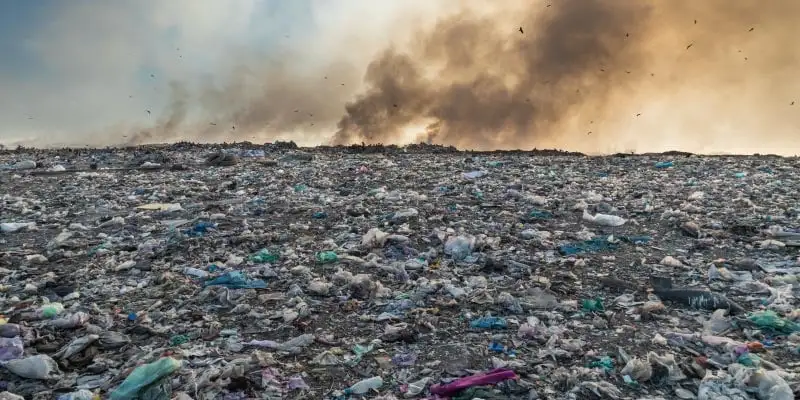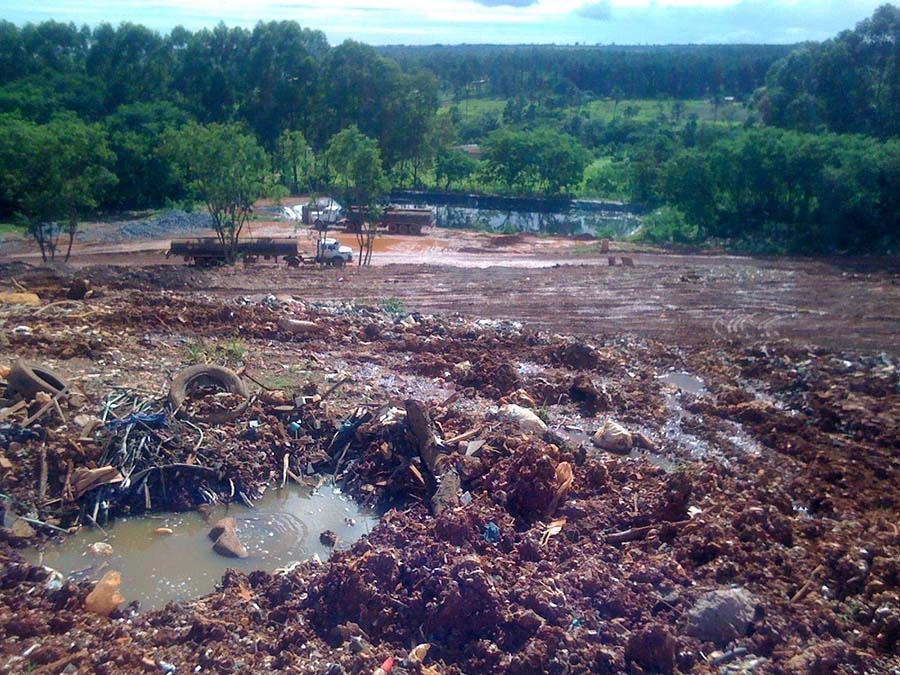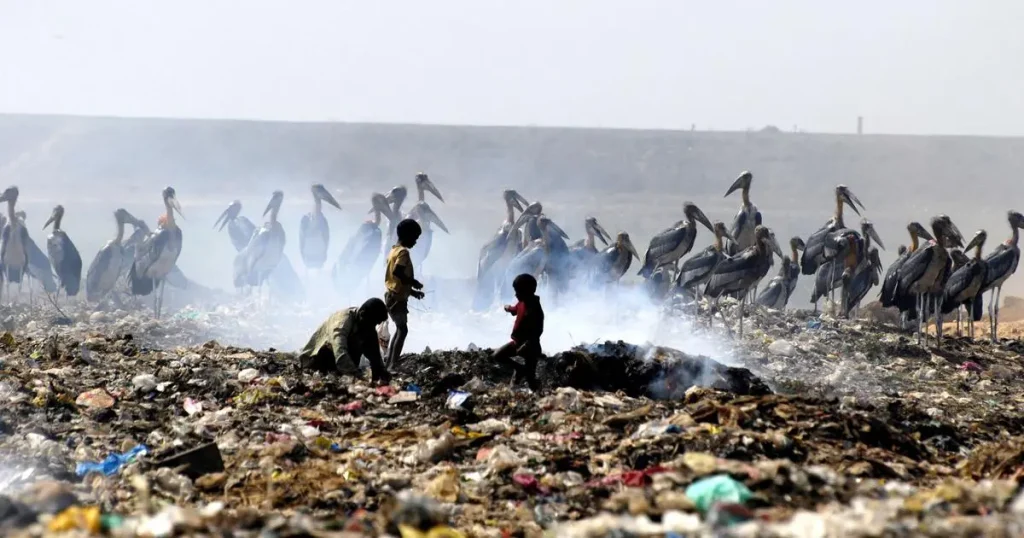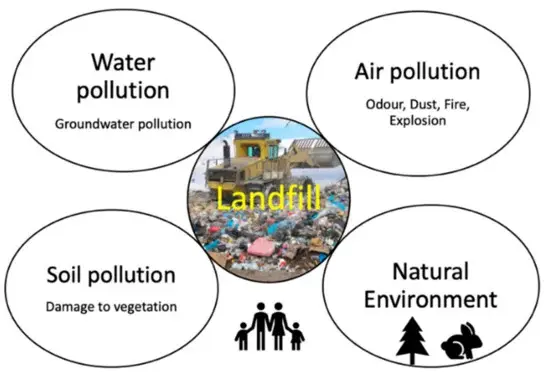
Introduction
Governments develop and implement waste management systems to prevent trash from flowing into or gathering in the environment. These systems include recycling, incineration, waste to energy, landfills, and composting. Inappropriate disposal of waste intensifies the adverse environmental impact of landfills and puts our ecosystems in worse condition.
Landfill sites also called sanitary landfills, are spaces where waste produced by humans has to be dumped. As the world economy is developing, the waste production is also increasing. The continuous increase in waste production also increases the effects of landfills on the environment and ecosystem.
What Is a Landfill?
A landfill is a selected area for waste disposal. Waste management specialists survey and select an enormous area of land, especially away from water sources and residential areas. Then digging the site deep enough to discard waste in layers. Sometimes pits or ditches that are already present are chosen. Then, the waste has to be pressed and compacted before covering the landfill.
Landfill disposal is one of the oldest forms of waste disposal among all waste disposal methods. Years before engineered landfills came into practice, people used to dig a pit and dump waste inside. To reduce the volume of garbage, landfill sites are designed on the basis of compressing the waste into several layers.
Designing of a Landfill
The basic design of a landfill must contain a layer of protection at the bottom of the pit which is necessary to avoid groundwater contamination around the landfill. It is mandatory to press the waste to make it smaller in volume and cover it with soil after dumping. Sometimes, wood chips are used to cover up. It is essential to cover the waste on a daily basis to stop animals from digging it up and scattering it around.
Covering the waste also prevents the breeding of flies and the spread of strong dirty odors, pathogens, and waste. An innovative landfill site comprises a liner system at the bottom of the landfill for collecting leachate (the liquid that forms as water penetrates through solid waste). More advanced landfills also treat leachate after removal from the landfills.
Bioreactor systems known as aerobic or anaerobic bioreactors are present in some landfills. These systems speed up the process of decomposition in organic matter, encouraging the conditions necessary for the waste-decomposing microorganisms’ growth and production of biogas. However, there is a need for skilled operators to maintain the bioreactor systems in advanced engineered landfills.
Types of Landfills
There are many types of landfills for several kinds of waste materials. Some of the most common types are;
Municipal Solid Waste Landfills
These landfills mostly receive household garbage and other types of waste that are not hazardous. Some of the examples of non-hazardous wastes are non-hazardous sludge, commercial solid wastes, and non-hazardous waste from industries.
Industrial Waste Landfill
An industrial waste landfill is different from one that receives only municipal solid waste. Such landfills only receive industrial and commercial solid wastes and conditionally accept generator wastes. This type of landfill can also receive inactive materials like soil and rocks, ash, glass, clay slag, and plastics. Cement kiln dust, silicon, and non-chemically bound sand.
Hazardous Waste Landfill
This landfill is for hazardous solid wastes. Liquid hazardous wastes are not dumped into a standard landfill because of the high contamination risks, instead, only solid wastes are dumped into this specific type of landfill and cover them to prevent environmental pollution.
Construction and Demolition Waste Landfill (C&D)
In C&D landfill waste and wreckage from construction and mining sites are dumped. The waste includes road work materials, construction and demolition waste, dug-up materials, and site clearance waste. One cannot dump hazardous waste and industrial solid waste in these landfills.
The Negative Environmental Impact of Landfills
Greenhouse Gas Emissions
Dumping of municipal solid waste in a landfill emits toxic gases into the environment, putting various life forms in danger. There are two major toxic gas that are methane and carbon dioxide and others in small quantities are ammonia, sulfide, and non-methane volatile compounds (VOCs) emissions in landfills.
Chemical and biochemical reactions occurring in landfills generate new organic and inorganic matter. For example, tri and per-chlorethylene compounds convert into vinyl chloride. Amino acids also change into methyl-mercaptans, while sulfur compounds transform into hydrogen sulfide. If we add some types of industrial waste to landfill sites it produces other greenhouse gases. Such as the large plaster boards degraded in landfill sites produce hydrogen sulfide.
Landfill sites accept municipal and industrial solid wastes that produce xylenes, toluene, vinyl chloride, propylbenzene, carbon dioxide, and methane gas. Methane gas adds about 30% to global climate change. Methane emissions are stronger than carbon emissions because methane traps 20 times more solar radiation than carbon dioxide. This makes an equal volume of methane gas emissions a more substantial contributor to global warming.
A press release by Gloria Dickie on Reuters explains how landfills around the world release a lot of methane: https://www.reuters.com/business/environment/landfills-around-world-release-lot-methane-study-2022-08-10/
Fire Outbreaks
Because of the release of toxic components landfill fires are a big threat to human health and the environment. Firefighters and populations who live close to landfill areas are at higher risk of inhaling dangerous gases, which puts their health at risk. The level of the fire outburst and its health risks depend on three issues; the municipal solid waste material in the landfill, the nature of the fire, and the topography of the landfill.
The biological processes such as the decomposition of organic materials produce high levels of carbon and methane. Methane is a powerful gas that plays a huge part in landfill fires. Methane is a highly flammable gas that leads to the impulsive combustion of decaying waste materials. Spontaneous combustion is widespread in many landfill sites during dry seasons.
Groundwater Contamination

Municipal solid waste landfills frequently pollute the groundwater present in the surrounding areas of the landfill site. Along with producing toxic gases, landfill sites also produce leachate. Leachate is a liquid that leaches through the waste dumped in a landfill site. The liquid sewage sludge is an example of leachate.
Landfill leachate comprises four main compounds: nitrogen, heavy metals, volatile, and toxic organic compounds. The concentrations of toxic substances and harmful chemicals in leachate differ according to the age and type of waste. Also, seasonal weather changes and total rainfall affect the quality of landfill leachates. Chemicals from groundwater accumulate in organisms, passing through the food chain till they reach humans.
Impacts on The Habitat of Biodiversity
Landfills are one of the most wide-ranging facilities for solid waste management. The construction and occurrence of landfills in an area hugely impact various species and living organisms.
Building a landfill site that covers 100 ha affects local species by extinguishing their habitats. Landfill sites are typically far away from residential areas and human developments. So, waste management companies cut trees to create room for the construction of landfills. Clearing land space destroys animal habitats and ecological passageways.
Landfills also affect the stability of the species in the area. Hazardous waste materials attract alien species not native to the site. Toxic metals and chemicals act together with the soil fauna, leading to groundwater contamination. This contamination reduces the soil quality, thus disturbing the growth of vegetation and other life forms.
Impact of Landfills on Human Health

A landfill is a site filled with concentrated pollutants. It produces greenhouse gas emissions, ground and surface water contaminants, pungent odors, and bioaerosol. This largely affects landfill operators and populations living near the landfill sites. Constant inhalation of methane emitted from landfills can cause loss of coordination, vomiting, and nausea.
A higher amount of methane in the human body system can lead to death. Moreover, landfill waste releases sulfur dioxide and nitrogen dioxide. The inhalation or ingestion of these compounds can cause nose and throat irritations, and respiratory tract infections. It is mainly dangerous for asthmatic people.
Solutions to Reduce the Environmental Impacts of Landfill Sites
There are several measures to mitigate the environmental impact of landfills worldwide. These measures will save us from water and air pollution and protect us from landfill fires and loss of biodiversity.
As we know leachate and its components are harmful to human health and other organisms. To distract waste leachate away from groundwater, leachate should be treated regularly. There are three major treatment methods for leachate. Such as biological processes, leachate transfer methods, and chemical and physical methods.
The biological method eliminates large amounts of leachate with high quantities of toxic material. Also, it removes organic and nitrogenous substances from the leachate of fresh organic waste.
Conclusion
There is no complete and perfect method for solid waste management. We can always combine various waste management systems to distract waste from the environment. However, we should be looking at the environmental impacts of these systems because they pollute the environment. We are not distracting waste from the environment to create more ecological pollution problems. It contradicts the whole point of waste management systems.
The negative impacts of landfills on the environment lead to global climate change and massive environmental damage. We keep increasing the rates of waste at which global warming occurs. Most methods to prevent impacts like greenhouse gas emissions, air pollution, water pollution, landfill fires, and health concerns depend on landfill management. https://thecliment.com/climate-change-and-its-alarming-impacts-on-the-environment/

 The Climent Respect your roots, Protect your planet
The Climent Respect your roots, Protect your planet

2 comments
Pingback: 8 Best Methods of Composting: Turning Trash into Treasure - The Climent
Pingback: The Devastating Impact of Hazardous Waste: A Guide to Disposing of Hazardous Waste - The Climent